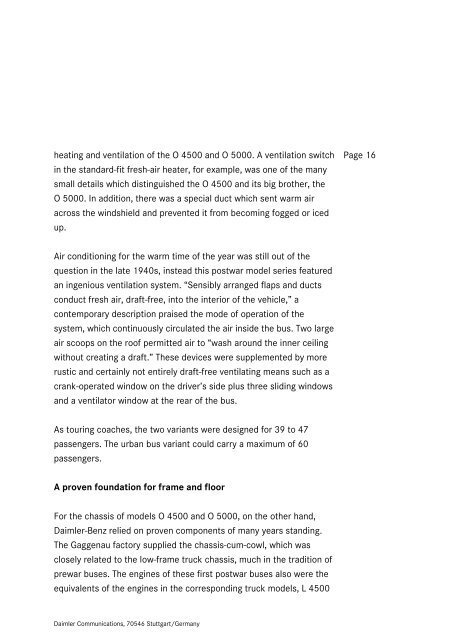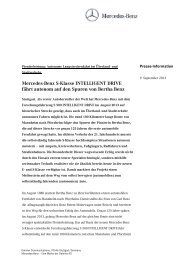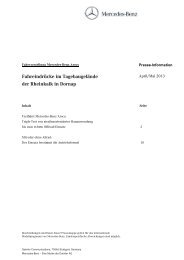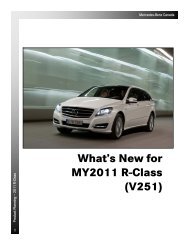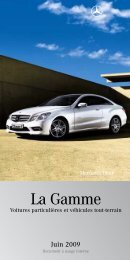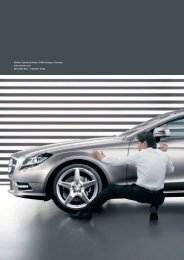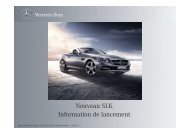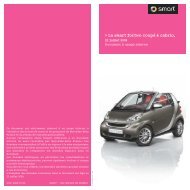Mercedes-Benz Bus History - Daimler
Mercedes-Benz Bus History - Daimler
Mercedes-Benz Bus History - Daimler
You also want an ePaper? Increase the reach of your titles
YUMPU automatically turns print PDFs into web optimized ePapers that Google loves.
heating and ventilation of the O 4500 and O 5000. A ventilation switch<br />
in the standard-fit fresh-air heater, for example, was one of the many<br />
small details which distinguished the O 4500 and its big brother, the<br />
O 5000. In addition, there was a special duct which sent warm air<br />
across the windshield and prevented it from becoming fogged or iced<br />
up.<br />
Air conditioning for the warm time of the year was still out of the<br />
question in the late 1940s, instead this postwar model series featured<br />
an ingenious ventilation system. “Sensibly arranged flaps and ducts<br />
conduct fresh air, draft-free, into the interior of the vehicle,” a<br />
contemporary description praised the mode of operation of the<br />
system, which continuously circulated the air inside the bus. Two large<br />
air scoops on the roof permitted air to “wash around the inner ceiling<br />
without creating a draft.” These devices were supplemented by more<br />
rustic and certainly not entirely draft-free ventilating means such as a<br />
crank-operated window on the driver’s side plus three sliding windows<br />
and a ventilator window at the rear of the bus.<br />
As touring coaches, the two variants were designed for 39 to 47<br />
passengers. The urban bus variant could carry a maximum of 60<br />
passengers.<br />
A proven foundation for frame and floor<br />
For the chassis of models O 4500 and O 5000, on the other hand,<br />
<strong>Daimler</strong>-<strong>Benz</strong> relied on proven components of many years standing.<br />
The Gaggenau factory supplied the chassis-cum-cowl, which was<br />
closely related to the low-frame truck chassis, much in the tradition of<br />
prewar buses. The engines of these first postwar buses also were the<br />
equivalents of the engines in the corresponding truck models, L 4500<br />
<strong>Daimler</strong> Communications, 70546 Stuttgart/Germany<br />
Page 16


